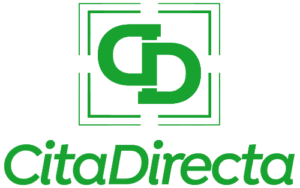Small business owners have a lot of things in the plate while changing their economic assistants. According to NFIB’s latest small business optimism index report, small business sentiment has been steadily maintained in June, but there is a specific pressure that can affect daily operation and growth strategies.
The index, slightly away from 98.6, is a positive indicator than an average of 98 in 51, but still reflects the ongoing challenge. An important factor in this slight reduction is that the increase in respondents reporting excessive inventory emphasized the delicate balance between supply chain management and consumer demand.
NFIB’s best economist Bill Dunkelberg said, “Small business optimism remains steadily in June, and he continues to be a major concern for small business owners, which affects strategic decisions in various industries.
The main takeout of the report provides insight into the current status of small businesses.
- Inventory management: Pure perception of inventory adequacy has dropped to 5%. It is important that 12%of the owners feel «too high» and carefully evaluate the inventory level so that they do not bind capital to products that are not sold.
- Business condition: Business owners’ expectations for improved conditions fell to 22%and still surpassed 3%of historical average. This suggests that many owners leave hope, but that they are notice.
- Labor market taskThe majority of the owners (36%) have reported the opening of unknown jobs, and almost all employers are struggling to find qualified applicants. This adds pressure on operating efficiency and can limit growth if the position is excellent.
- Compensation pressure: The funds for future employment can be affected by the increase of compensation, and the closely reflection of the pure reporting wage, that is, the labor market. The owner who plans to raise wages in the next few months may consider how it will affect the overall budget.
- Inflation trend: The 11% decrease of owners who cite inflation as the highest problem suggests some economic pressure. But the remaining costs still raise the challenge.
These results provide a wide range of snapshots for small business environments, but practical applications are essential for small business owners who want executable insights. If some people’s inflation pressure is alleviated, it can now be an ideal time to evaluate the price strategy. However, those with a higher price should measure customer sensitivity to the need for improvement of margins.
Another focus is inventory management. Dealing with excess stocks can strain the cash flow, so it is important to adopt a reactive inventory strategy that matches sales forecast and market demand. Effective management technologies, such as on -time inventory systems, can help reduce financial burden in the long run.
Even though the optimism theory remains steadily, potential obstacles are clear. The owner should be well aware of the inherent market conditions in relation to the quality and availability of labor. This is a continuous challenge to guarantee creative solutions to attract high -quality candidates such as enhanced educational programs or flexible work preparations.
In terms of capital investment, the index showed a slight decrease in the owner who plans a significant spending at the lowest level since August 2020. Wise investing wisely in required equipment or technology can help your business to maintain competitiveness. But in the last six months, only half of the owners who report capital expenditures can be re -evaluated immediately and future cash flows before they invest significantly.
Finally, the ongoing focus on tax burden indicates an area that can help small business advocacy. Relationships with local representatives in tax reform can play an important role in solving concerns that have a direct impact on the conclusion.
As businesses explore these mechanics, it is essential to adapt and use data -oriented decisions. As summarized in the NFIB report, maintaining information on industry trends and economic development can help you to business leaders. For more information, you can find it in the entire report of NFIB. Website.
For small business owners, maintaining the pulse for these insights can mean the difference between congestion and growth.
Image through NFIB




